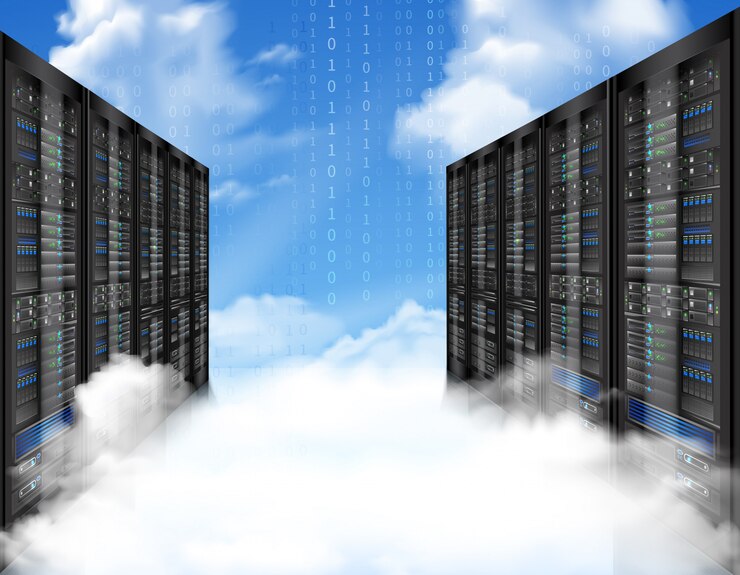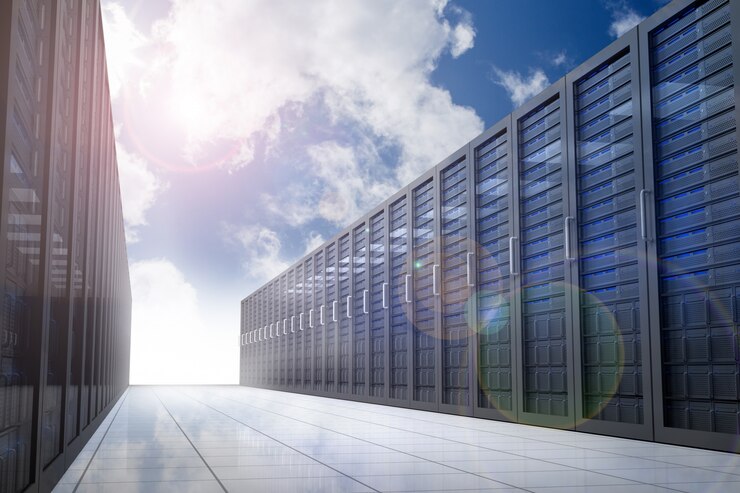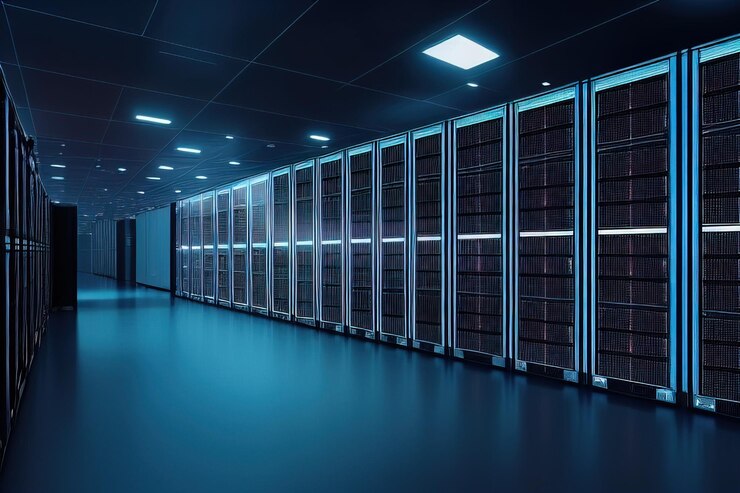“A place for keeping your data safe.” Data centers are centralized facilities where businesses store, manage, and protect their critical IT infrastructure, including servers, storage systems, and networking equipment. These centers ensure data accessibility, security, and connectivity, supporting day-to-day operations and essential business applications.
Among various types of data centers, enterprise data centers stand out as custom-built facilities designed specifically for large organizations’ unique needs. Unlike traditional colocation or cloud data centers, enterprise data centers are typically «owned» and operated by the business itself, offering tailored configurations, enhanced control, and advanced protocols to meet industry-specific demands. How do these enterprise centers work, and how can they be beneficial to a business? Let’s talk about it in Dana cloud!
If you want more information read the article: What is data center
Definition of enterprise data center
An enterprise data center is a dedicated, often privately owned facility that a large organization builds and operates specifically to manage and secure its critical IT infrastructure. Unlike other data centers, such as colocation or cloud facilities, enterprise data centers are tailored to meet a single business’s unique needs, compliance standards, and security requirements. Why? because the business literally “owns” them and is able to customize them.
This customization allows organizations to exercise full control over hardware, software, and network configurations, adapting the environment to support specialized applications, high data processing needs, and strict protocols.
Take Amazon and Google, for example. Both companies operate enterprise data centers worldwide, specifically designed to handle massive data processing, secure storage, and high-speed connectivity. These centers are built to support their extensive services, including e-commerce, cloud computing, and search functionalities, enabling reliable, scalable, and secure operations on a global scale.
Read more: What is a Colocation Data Center? Types & Benefits
What are components of an enterprise data center?
Enterprise data centers are optimized for high performance and reliability, often incorporating redundancy in power, cooling, and network connections to avoid downtime and data loss. While these centers may require significant investment and maintenance resources, they provide the flexibility to scale infrastructure according to the business’s growth and evolving technical requirements. How does an enterprise facility fulfill all of its duties? With these components:
- Servers: To process and store data for applications and services.
- Storage Systems: High-capacity solutions like SANs and NAS for data storage and retrieval.
- Networking Equipment: Routers, switches, and firewalls for secure, efficient data traffic management.
- Power Supply and Backup: Redundant power systems, including UPS and generators, to prevent downtime.
- Cooling Systems: HVAC units to maintain optimal temperatures and protect hardware.
- Security Infrastructure: Physical and cybersecurity measures, including surveillance, biometrics, and encryption.
- Management Software: Tools for monitoring, controlling, and automating operations within the data center.
What Are the Network Sub-Groups of Enterprise Data Centers?
When we say “sub-groups,” we are actually referring to distinct network segments within the data center, each serving specific functions to enhance performance, security, and data management. Here’s how these sub-groups are typically structured:
- Intranet (Internal Network): This sub-group houses applications and services that only internal employees access. It supports critical business operations like manufacturing, research and development, marketing, and data analytics, ensuring private, fast, and secure data transfer within the organization.
- Extranet (Business-to-Business Network): Designed for secure, external business partnerships, the extranet supports business-to-business (B2B) transactions and interactions. It allows authorized third parties to access specific data and applications via private WAN links or secure VPN connections, facilitating seamless collaboration.
- Internet (Public-Facing Network): Connecting the enterprise to the public internet, this sub-group includes the necessary devices and servers to operate web services and applications. This network segment enables customer interactions and allows employees to access public resources securely.
- Storage Network: Dedicated to managing data storage, this network handles protocols like Fibre Channel and iSCSI to provide efficient data retrieval and storage.
- Management Network: This secure network is used exclusively by IT administrators for monitoring, configuration, and troubleshooting. It isolates administrative tasks from general data traffic.
- Backup and Recovery Network: Ensures data redundancy, managing backups and disaster recovery processes for data integrity and quick restoration during outages.
Read more: What is an Edge Data Center?
How is an Enterprise Data Center Different From Other Types of Data Centers?
First and foremost, let’s remember that an enterprise data center is designed specifically and uniquely to meet the needs of a single organization. Unlike shared facilities (like colocation or cloud data centers) that support multiple users or clients, an enterprise data center is usually built, owned, and operated solely by the business it serves. This specific feature lets the users and customers build and store their data however they see fit.
Read more: What is a Cloud Data Center?
What Are the Advantages of an Enterprise Data Center?
Here are the features and benefits that make an enterprise center a good choice for many big businesses and companies:
- Full Control: Organizations manage their own hardware and software.
- Customization: Tailored designs meet specific operational needs.
- Enhanced Security: Advanced security protocols reduce breach risks.
- High Performance: Optimized for speed and reliability.
- Scalability: Easily expandable to accommodate growth.
- Cost Efficiency: Long-term savings compared to outsourced solutions.
Read more: What is Hyperscale data center?
What Are the Disadvantages of an Enterprise Data Center?
These are the points that can be challenging in the choice of an enterprise data center:
- High Initial Costs: Significant upfront investment is required.
- Resource Intensive: Needs dedicated IT staff for management.
- Long Deployment Time: Building takes considerable time.
- Limited Flexibility: Scaling can be challenging compared to cloud solutions.
- Risk of Obsolescence: Equipment may quickly become outdated.
- Operational Responsibility: Organizations handle all management aspects.
How to Manage Your Enterprise Data Center
Making a choice and getting an enterprise center are two things, and maintaining and managing them are another. Management requires a strategic approach to ensure optimal performance, security, and efficiency. Here are key points to consider:
- Regular Monitoring: Implement monitoring tools to track system performance, resource utilization, and network traffic. This helps identify potential issues before they escalate.
- Maintenance Schedule: Establish a routine maintenance schedule for hardware and software updates. Regularly check for firmware upgrades and patch vulnerabilities to ensure security.
- Resource Allocation: Assess and allocate resources based on current and future needs. Use virtualization technologies to optimize resource utilization and improve flexibility.
- Backup and Disaster Recovery: Implement a robust backup strategy and test disaster recovery plans regularly. Ensure data redundancy to protect against loss and minimize downtime.
- Security Protocols: Enforce strict access controls, utilize firewalls, and conduct regular security audits—train staff on security best practices to safeguard sensitive data.
- Energy Management: Optimize energy consumption by utilizing energy-efficient equipment and monitoring cooling systems. Consider implementing a green data center approach to reduce operational costs.
- Documentation: Maintain detailed documentation of all processes, configurations, and changes to facilitate troubleshooting and ensure compliance with regulations.
Related article: What Is a Micro Data Center?
FAQ
-
What is the main purpose of an enterprise data center?
The primary purpose is to provide a dedicated space for storing and managing data, supporting IT infrastructure, and enhancing a business’s security and efficiency.
-
How often should an enterprise data center be updated?
Updates should occur regularly, with software patches applied promptly and hardware assessed every few years to ensure efficiency, security, and capacity for business growth.
-
What are the key factors to consider when designing an enterprise data center?
Consider scalability, energy efficiency, security measures, and redundancy for power and cooling. Compliance with regulations and the physical layout for optimal workflow are also important.



